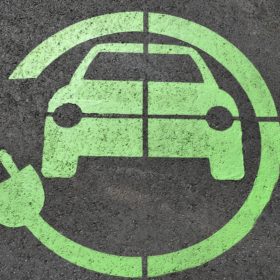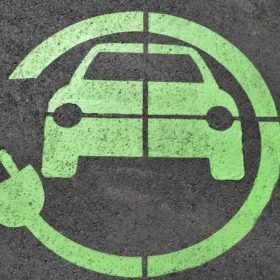A Champagne moment for commercial electric vehicles?

Detroit-based Bollinger Motors’ versatile E-Chassis for electric vehicles could pave the way for a commercial vehicle fleet transition in the U.S. which accelerates the e-mobility revolution.
From pv magazine Australia.
Bollinger Motors, a U.S. company out of Detroit, is looking to reinvigorate ‘The Motor City’ and the world with its, patent-pending E-Chassis. The automotive base frame revealed last month by the manufacturer could speed up electric vehicle (EV) adoption as it can be deployed in commercial fleets.
“When we first built our class 3 B1 [chassis], we knew there was a commercial aspect to the platform,” said Bollinger Motors CEO and founder Robert Bollinger. “Not only cab-on-chassis, but entirely new truck bodies can fit on our E-Chassis, and [could] help propel the world to all-electric that much faster.”
The chassis, which can already accommodate the Bollinger B1 SUV and B2 pickup, will form the basis of all future Bollinger models and trucks. Its manufacturer hopes commercial customers will be able to switch over fleets to electric more easily if a single chassis can be used for a variety of models.
EVs are growing in popularity worldwide but have not yet hit the economies of scale required to trigger exponential growth.
Bollinger’s designs might be argued to draw inspiration from their namesake Champagne producers – at least if you think crates rather than bottles. Hard lines follow a trend in EV-truck design which started with Tesla’s Cybertruck, an edgy vehicle in more ways than one. For some reason, the designers of E-utes seem to think the things should all look like the spaceships imagined in the 1980s.
You say truck, I say ute…
Which brings us neatly to the company owner referring to the pickup’s long tray as a “long-bed, mullet-style haircut;” even if mullets were surely ‘business in the front and a party in the back.’ Utes are configured the other way round. pv magazine will not pass judgement on the likelihood of mullets being observed in the cab of the Bollinger pickup.
Of course, there is some truth in the idea form follows function, though the aphorism beauty follows one’s heart might be more appropriate. In the case of EVs however, function is good enough. After all, we’re not trying to reinvent the wheel, just trying to spin it cleanly.
EVs are falling in price and gaining in utility. As manufacturers engage in ‘unprecedented’ collaboration toward economies of scale, charging networks are being laid out and energy retailers are incentivizing uptake. However, according to the Australian government’s 2018 emissions projections, transport is set to continue as one of the nation’s biggest emitters, particularly road transport. The transition to EVs needs to pick up speed and focusing on fleet transition, as Bollinger’s platform design does, is a good place to start.
Fleet Transition
The Australian Renewable Energy Agency (Arena) and green bank the Clean Energy Finance Corporation in 2018 published a report predicting the uptake of EVs would increase significantly over the succeeding decade to hit price parity with petrol vehicles by the early-to-mid-2020s. Arena acknowledged fleet vehicles would be critical, as they supply more than half of new vehicle sales in Australia.
The Bollinger chassis may not be open to many Australians when it hits the U.S. market next year, but it will offer a platform from which EVs can take off.
U.S. management consulting firm McKinsey and Company stated in last year’s Making electric vehicles profitable report, purpose-built EV chassis are simpler to assemble and could deliver up to US$600 in savings per vehicle.
Such vehicle platforms are also easier to ship and enable multiple body variations, meaning fewer tools and maintenance costs are required. The Bollinger chassis could prove the platform of the future.


